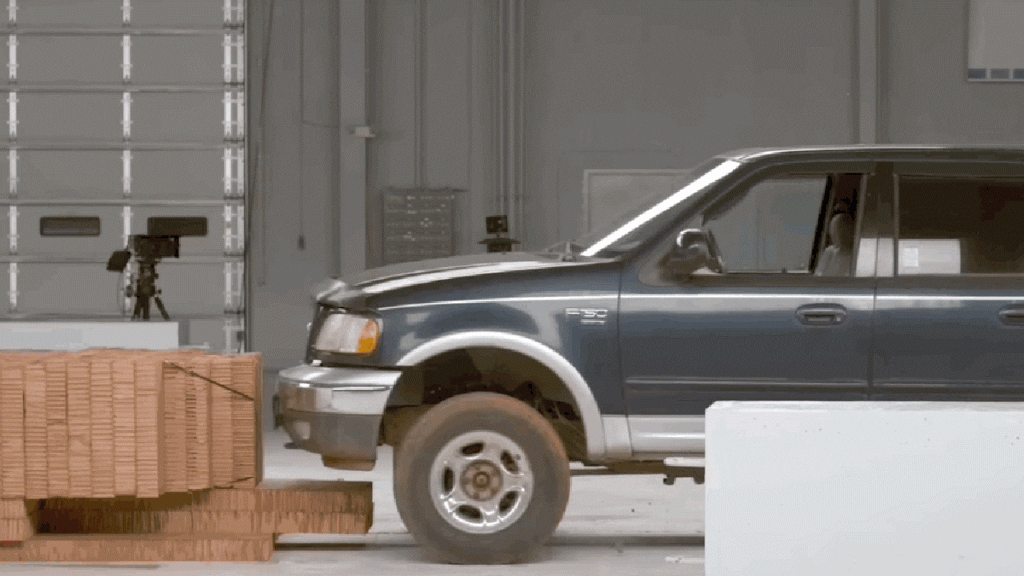IIHS Crash-Tested its Heaviest Vehicle Ever to Prepare for Massive EVs

Electric vehicles are really heavy, and that’s bad news for our roads, our environment and passenger survivability in crashes. The weight increase also complicates things for the safety watchdog groups dedicated to crash-testing new vehicles. The Insurance Institute for Highway Safety had to rig up the heaviest vehicles it’s ever tested to make sure its evaluation equipment is up to the challenge.
The IIHS loaded up some older vehicles with steel plates and concrete blocks to replicate the weight of some of the heavier EVs heading to market — like the gargantuan Hummer EV, which clocks in at about 9,500 pounds. The electric Hummer’s batteries alone weigh more than an entire Miata.
IIHS crash propulsion system still pulling its weight
Naturally, the IIHS doesn’t drive vehicles into concrete pylons under their own power. The agency uses a propulsion system consisting of a tow cable that gets hooked to the vehicle and brings it to a speed of 40 mph over just 600 feet. This battery of tests with extra-heavy vehicles was meant to ensure the 20-year-old “crash machine” is up to the task with increasingly massive vehicles.
Since the IIHS only needed to test the strength of the system, the agency didn’t need to consume a real and extremely expensive EV. Instead, they loaded up some older model vehicles and slammed them into the concrete. The 9,500-pound test vehicles represents the heaviest automobiles IIHS has ever smashed in its testing facility, knocking the sub-6,000 pound 2019 Audi E-Tron out of first place.
Crashing EVs can be a risky business. Joe Young, Media Relations Director at IIHS, told Jalopnik there are special considerations when crash-testing a battery-powered vehicle.
G/O Media may get a commission
Good, whole food for your dog.
Nom Nom’s meals are overseen by two Board-Certified Veterinary Nutritionists, who make it their mission to deliver your dog nutrient-rich, healthy foods.
“We do test with the batteries in place (at a charge of about 12.5 percent), and we closely monitor the battery temperature during and after the crash,” Young said. “We also have some special precautions in place to ensure that the vehicle chassis is not electrified before our technicians start doing post-crash analysis. And there are special precautions in place to move the vehicle outside quickly and safely if there were a problem.” So far, IIHS has never had an EV catch fire during crash testing, but it pays to be prepared, because battery fires are no joke.
Heavy electric cars, however, are likely to make a bad problem on U.S. roads even worse. Not to be a broken record, but traffic deaths reached a 16-year high in 2021 and this year is not looking much better. Part of the reason for this higher fatality rate, especially among pedestrians, is the increasing presence of heavy, large SUVs and trucks on the roads. The IIHS’ own studies show that such vehicles are more likely to kill pedestrians and other vulnerable road users. It seems another way we could easily cut down on traffic deaths would be to restrict the size and weight of mainstream vehicles, but considering automakers make bank on such vehicles, that solution is likely a non-starter.



